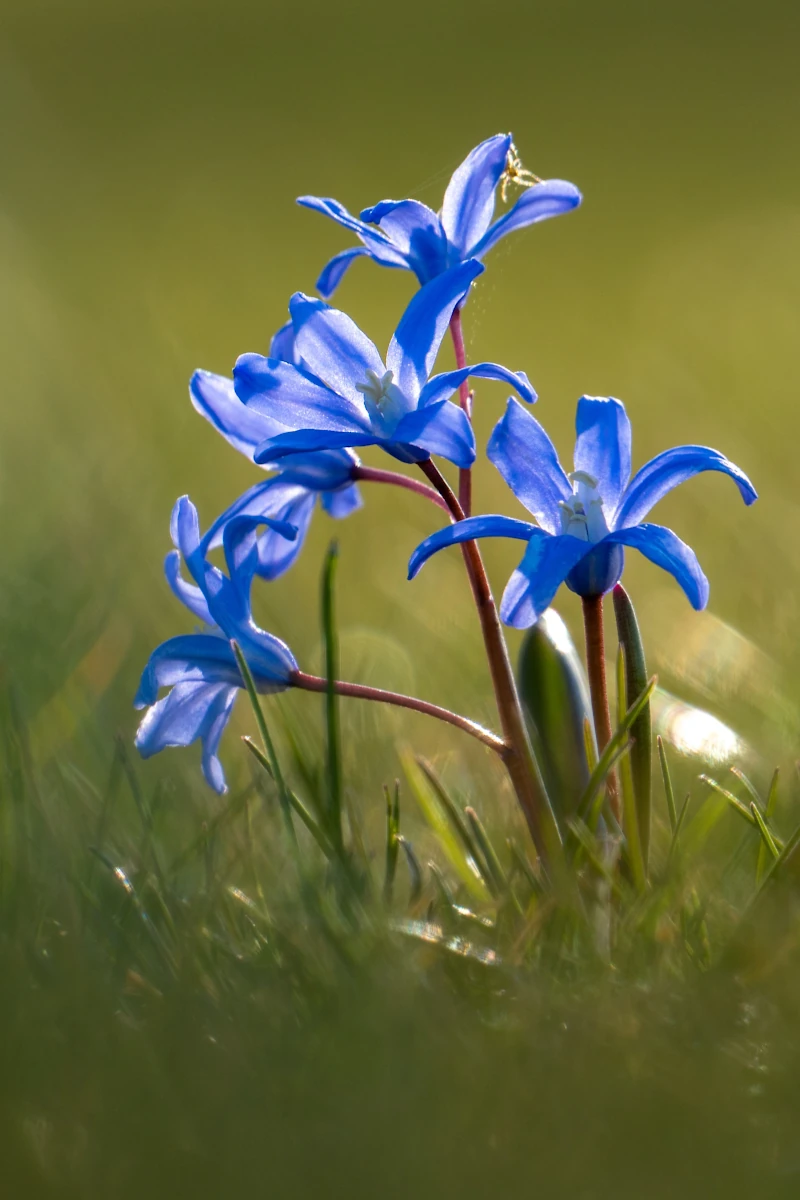In early spring, before Ireland’s hedgerows dare to bloom and while the land still breathes the chill of winter, a quiet phenomenon begins to ripple through gardens, old estates, and forgotten corners of the Irish countryside. It arrives subtly, like the faintest tint to a canvas—the first flickers of blue.
You won’t find Scilla siberica mentioned in tourism brochures or shouted about on social media. It doesn’t bloom in dramatic riots or demand pilgrimage. It prefers the understory—beneath leafless trees, beside moss-softened walls, or peeking between centuries-old gravestones. And yet, for those who know where to look, Scilla siberica, or the Siberian squill, becomes a seasonal signal: a brief, brilliant suggestion that spring, however hesitant, is arriving.
Table of Contents
Not Native, But Naturalised
Scilla siberica isn’t Irish by origin. As its name suggests, the plant hails from southwestern Russia, the Caucasus, and Turkey. But it has taken to Ireland with a kind of gentle tenacity. Introduced in the 19th century by Victorian gardeners smitten with its piercing, lapis-blue petals, the squill has since slipped its horticultural boundaries.
It now colonises with the slow patience of something ancient, not invasive—spreading in drifts and constellations, naturalising in woodlands and shady verges across the island. In certain places, like the lesser-frequented corners of Wicklow’s old estates or beneath beech canopies in County Clare, it can feel as though it’s always been here.
“There’s something almost illicit about it,” says Bríd O’Mahony, a gardener based in County Kildare. “It appears in places you didn’t plant it, in numbers you didn’t expect. Like it’s conspiring with the land.”
A Blue That Doesn’t Belong—But Fits
The blue of Scilla siberica is not the soft, misty blue so often associated with Ireland’s rain-washed palette. It is electric. Unapologetic. The kind of blue that startles the eye after a winter of greys and browns. And in that incongruity, it somehow fits.
In Bray, the squill makes brief but startling appearances between March and April, casting a sapphire shimmer across shaded parts of the estate’s wilderness area. It’s not formally announced. There are no signs. Just a knowing among staff and a few returning visitors who time their walks accordingly.
“People don’t expect it,” says a gardener, Rory Flynn. “They ask what it is as if they’ve stumbled into something secret.”
That sense of discovery is part of the plant’s charm. Unlike the daffodil—with its brassy confidence and suburban ubiquity—the squill remains a whisper. It doesn’t crowd, it doesn’t shout. And crucially, it departs as suddenly as it arrives. By late April, it has vanished, leaving only memory and the promise of recurrence.

Ghost Gardens and Forgotten Spaces
To appreciate Scilla siberica in Ireland, it helps to enjoy getting a little lost.
In the grounds of a crumbling estate near Birr, where ivy has overtaken iron gates and robins seem to outnumber people, the squill thrives among the remnants of an orchard that hasn’t borne fruit in decades. Local lore holds that the bulbs were brought back from Europe by an Anglo-Irish botanist in the 1880s, though records are hazy.
“You find these flowers in the kinds of places that time half-remembers,” says Áine Kirwan, an ecologist from Dublin. “They grow in what I call ‘ghost gardens’—where someone once cared for the land, but the land has since gone to sleep. The squill stays awake.”
It’s this quiet persistence that has earned Scilla siberica its pockets of reverence among gardeners, foragers, and accidental admirers.
Not Photogenic—But Intimate
Perhaps it’s a sign of the times that a flower so vivid and photogenic has somehow escaped the gravitational pull of Instagram. The blue of Scilla siberica doesn’t render well on phone cameras. It either glows too much or dulls completely. Its charm resists being digitised.
Instead, its appeal lies in the analogue: walking a little further down a path than you’d planned, noticing colour before context, kneeling to examine something just beginning.
To see it well is to move slowly. To value it is to let go of expectation.

Amazing Things for Families to Do in Ireland
With rolling green hills, rugged coastlines, and enchanting forests, Ireland offers families endless opportunities for adventure and discovery.
A Brief, Blue Interlude
There is no festival for Scilla siberica in Ireland. No blue-themed parades or merchandising. And that’s probably for the best. Its rhythm is too old for such things. It thrives instead in the overlooked corners and liminal seasons—in the hushed spaces between winter and spring, when the land is still undecided and beauty must be looked for rather than advertised.
If you go in search of it, don’t expect a spectacle. Expect a secret. A brief blue interlude in a country better known for its greens. And once you’ve seen it, you’ll start seeing it everywhere.